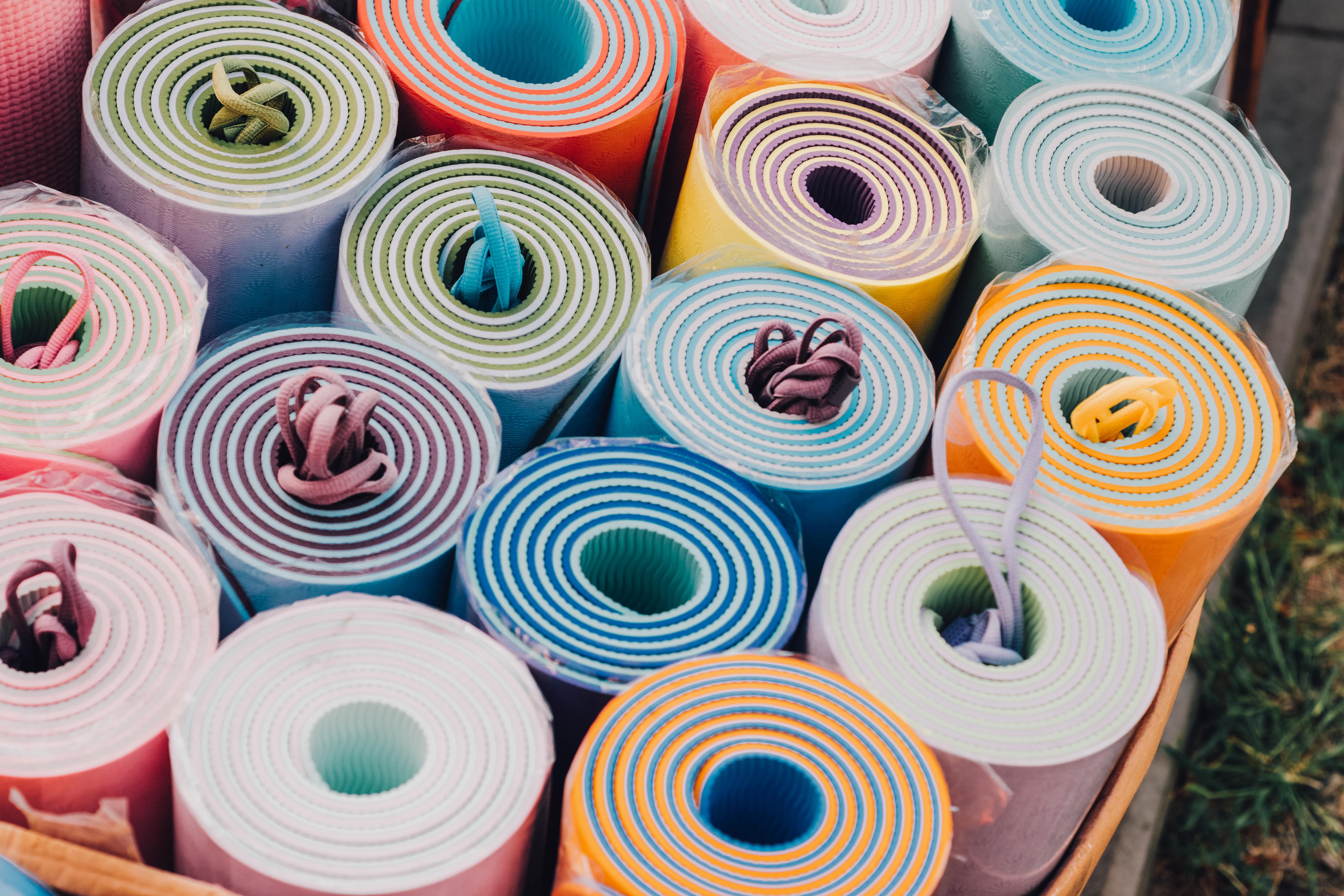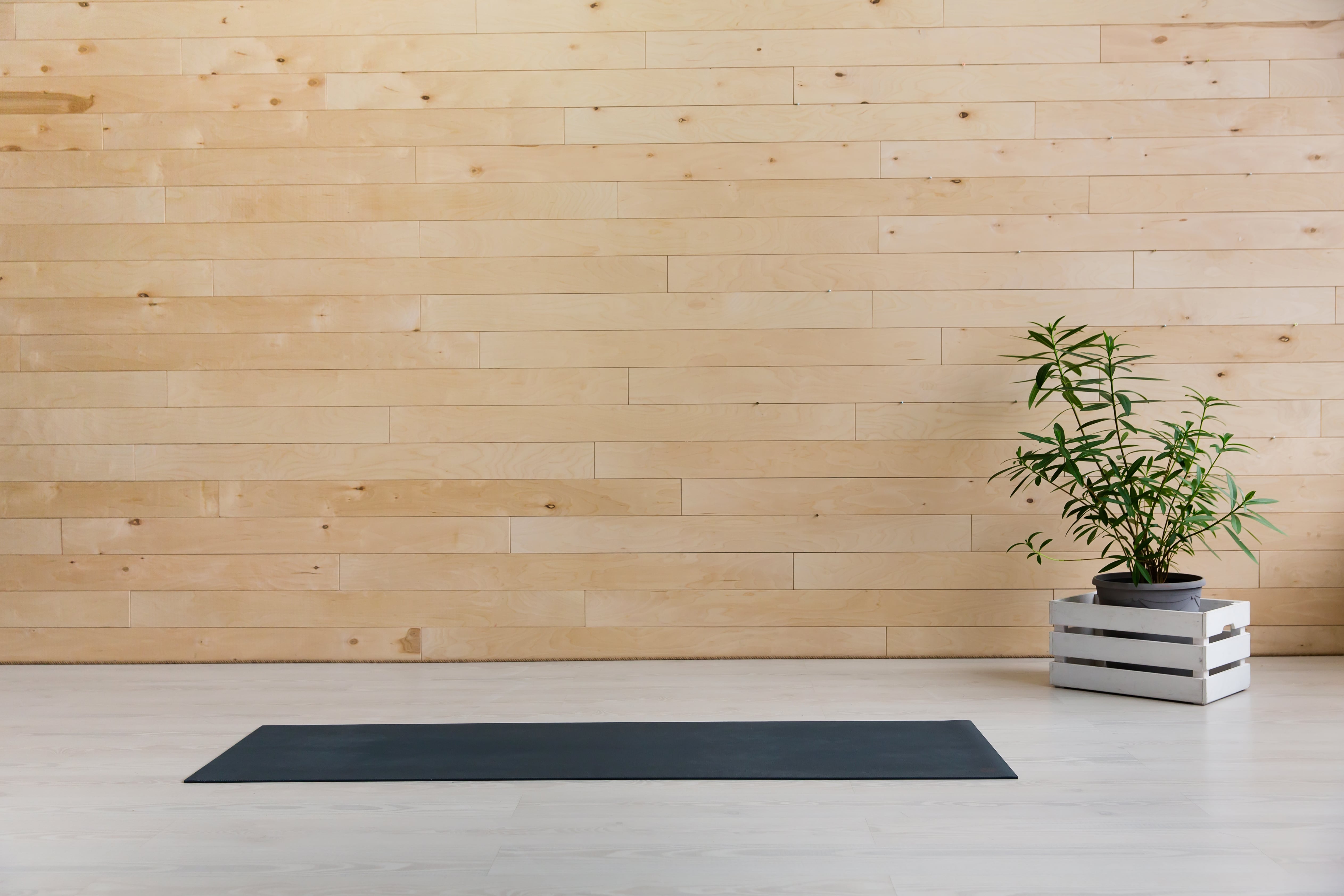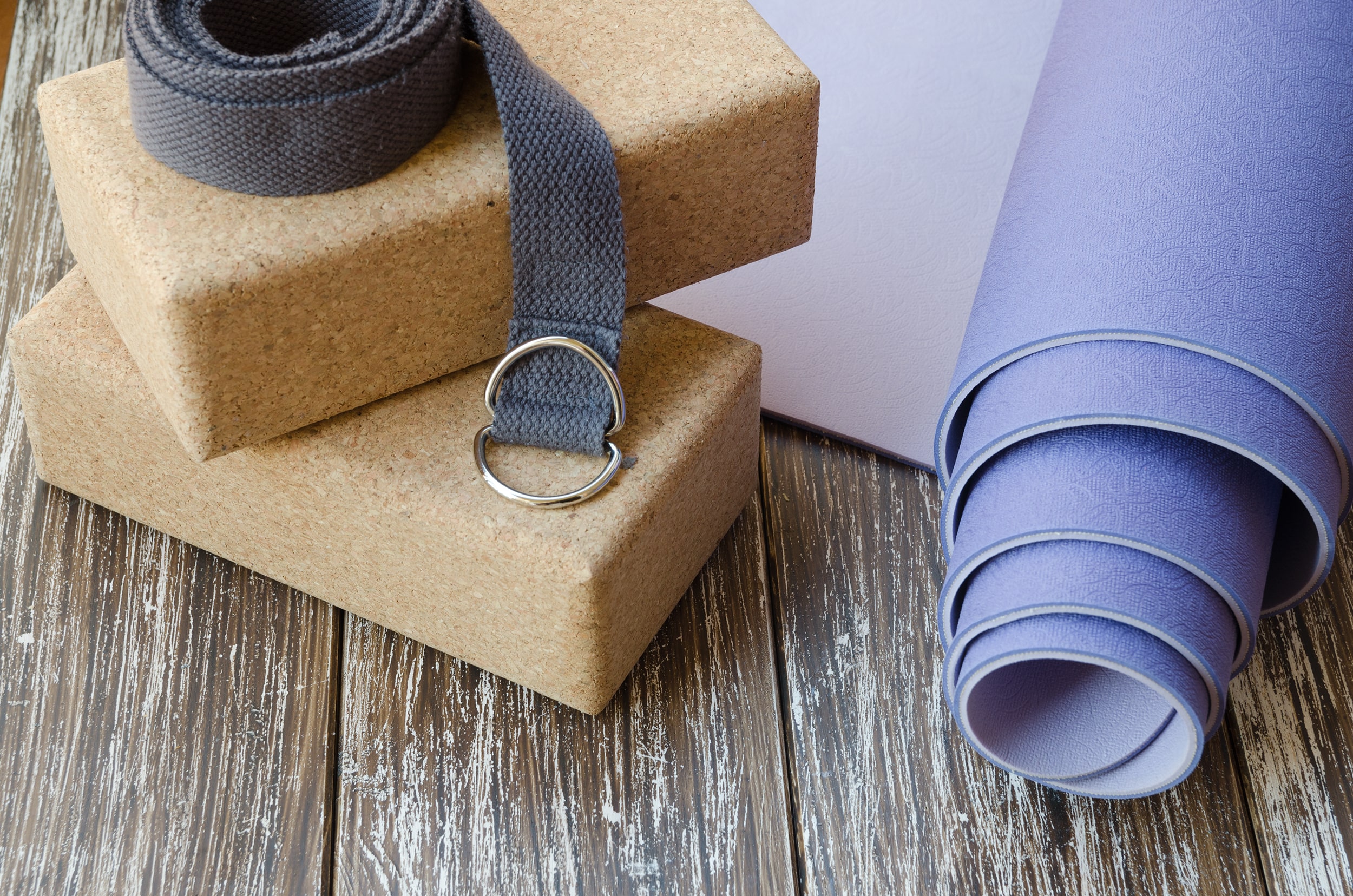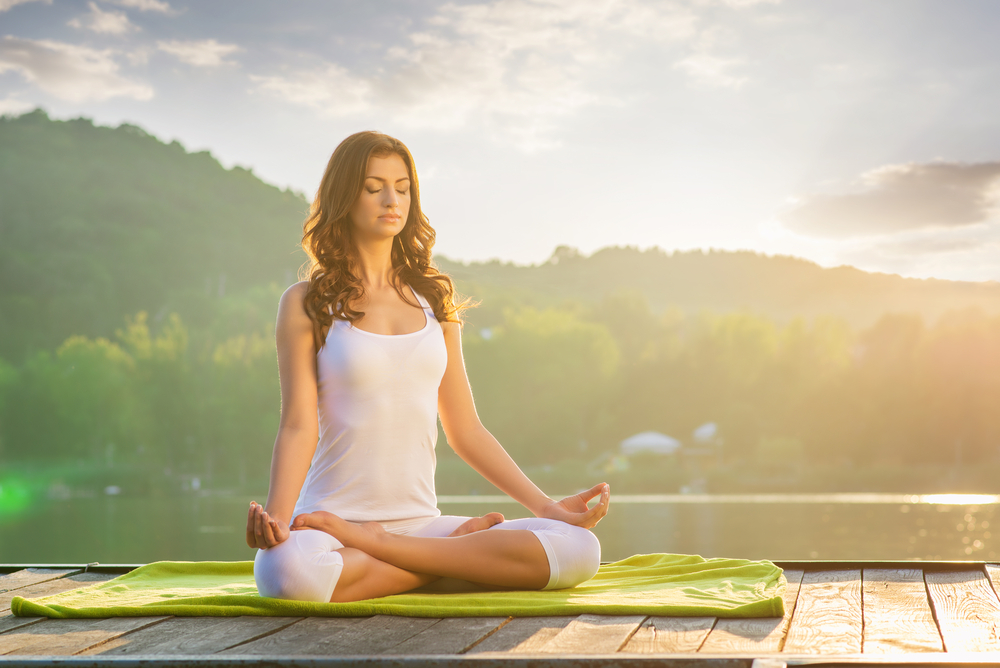Yoga is often described as the union between the body, mind, and spirit. Dating back more than 5000 years, yoga is practiced by millions of people all over the world. One of the reasons yoga is so popular is due to its low requirements for equipment: you can practice yoga with a simple, inexpensive mat.
There are many different mats to choose from. Whether you are thinking of taking up yoga for the first time or you are a well-seasoned Yogi, you will need to consider what kind of mat you may need for your practice.
If you practice yoga as part of a class, you may find that the instructor will provide mats for you to use. These generally tend to be cheaper mats (and sometimes well used and worn out), so even if you practice with a class, it’s worth it to have your own mat.
There are many different styles, colors, and sizes to choose from. Whether you’re new to the practice or a yogi, choosing the right mat can often be somewhat confusing. Choosing the right yoga mat is essential, as it will help make your yoga practice comfortable and help you ease into your routine.
Although there are many specialist yoga mats to choose from, most mats will work fine for most yoga practitioners. When it comes down to it, your choice will often be based on personal preference. However, knowing the differences between each yoga mat will give you a better understanding of their benefits and may also give you better peace of mind when choosing.
Contents
Does My Skill Level Matter?
If you’re a beginner to the art of yoga, you may want to consider how much you are willing to spend when choosing your yoga mat. Most starters buy cheaper mats to see if they like the practice before spending a lot of money on a more expensive product.
If you are more of an advanced yogi, then it’s worth looking into a well-made mat that will suit your needs more and has the quality to last a long time.

Choosing a Thickness and Length
Before you buy your yoga mat, you may want to consider its thickness and length. Too thin (1/16 inch or thinner) and you may be uncomfortable during your practice. Too thick (more than 1/4 inch) and you may reduce the connection you have with the floor, thus making it harder to do certain poses, such as the chair pose.
Consider where you will store your mat and how portable you need it to be. Thinner mats will be much lighter and allow you to store them in smaller storage spaces. Lighter mats will be better suited for traveling and you can even find mats that are as light as one pound!.
That being said, thicker mats will always offer greater support. Thicker mats will be heavy and bulkier, though, and therefore take up more room. The thickest, heaviest mats can weigh 7lbs or more.
For the wide variations in products, the best place to start is to take a look at the standard thickness (1/8 inch) and go from there.
As far as the length of your mat, choose a mat that matches your height. The standard length of yoga mats is about 68 – 72 inches. If you are taller than 6ft, it might be worth finding a mat that is longer than 72 inches (6 ft) to suit your needs. If you are shorter than 5’8, then any standard length will be fine!
Yoga Mat Materials
Yoga mats can be made from a range of different materials. Let’s review some of the most common materials used.
PVC
A cheap but durable material that is often found in more affordable yoga mats is PVC (Polyvinyl Chloride). Its non-slip and durable properties make it a good solution for beginners looking to buy a more affordable yet well-made mat. These mats will usually be smooth and therefore more slippery, so be careful when going for those more ambitious poses!
It is worth mentioning that although PVC is both an affordable and effective material used in yoga mats, it is surrounded by some health and environmental concerns. According to Livestrong, PVC is classified as a carcinogenic material that can cause health issues and environmental concerns during production. So if you are environmentally conscious, you may want to look for alternative materials.
Rubber
Rubber mats provide great resistance to slippery surfaces and are typically the main material used in ‘non-slip’ mats. They are often described as being ‘firm’ and great for balancing poses. However, it is worth mentioning that you should avoid rubber mats if you have a latex allergy.
Now, you may find that some rubber mats can sometimes give off an unusual smell, especially when they are brand new. If this occurs, simply use a mild soap and a warm water rinse and you should end up fine. Many of these mats are made from sustainable rubber, and therefore are more environmentally friendly.
Eco-Friendly
When choosing a yoga mat, you can find mats made from more eco-friendly materials that offer great support during your practice. Some materials, such as cotton, jute, and TPE (Thermoplastic Elastomers), are often used in yoga mats as a more environmentally friendly alternative. Yoga mats made from these types of materials provide a non-toxic alternative to PVC.
Although these will give you that peace of mind when it comes to your health and the environment, they may not be as durable as PVC or rubber mats, and these types of eco-friendly mats usually come at a higher price range.

Texture
The texture of your mat will make a noticeable difference to the connection you have between you and the floor. The texture can dictate how much traction your mat provides and can affect the way it feels. A soft texture may feel great when you’re in Child’s pose, but then it may not give you the support you need when headed into your Chaturanga.
The texture of the mat is determined from the materials used (PVC will be smooth for example). However, some manufacturers implement their own, unique texture designs, like raised bumps and cross-sections.
There is a range of textures to choose from. You can find mats as smooth as silk, to other mats that incorporate sandpaper-like materials for grip. The texture can also determine how comfortable the mat is for you. To put it simply, if you are looking for a mat that prevents slipping, consider a rubber or a jute mat that has a tactile pattern. The texture can provide a more solid connection with the floor, giving you confidence when doing your more advanced poses!
Brands to Consider
There are many brands of yoga mats out there and it can often sometimes feel overwhelming when trying to figure out the right one. Some of the most popular brands include names such as Manduka, Retrospec, and Gaiam. Many of these brands offer a wide range of mats that suit many different needs.
When looking for brands, you may also want to take into consideration whether you go for a non-slip mat or not. Non-slip mats will connect to the floor stronger (especially if you are doing Hot Yoga). A non-slip mat will help you get a better grip, as it’s crucial to be able to flow and hold through different poses.
Yoga Mat Maintenance
After some heavy use, you may want to consider cleaning your mat. There are many ways to clean your yoga mat from DIY tricks to specially made detergents. Keeping your mats clean, healthy, and smelling good will make yoga more pleasant for you and your classmates.
Yoga Towels
If you find yourself doing an intense form of yoga such as Bikram Yoga or other variations on Hot Yoga), yoga towels can be used to keep your practice area clean. You can use it to wipe away any sweat from your yoga mat during your practice.
If you find that your mat is too uncomfortable or slippery, you may find it useful to cover your mat. This will create more friction between you and your mat and support you during some of those more balance-oriented poses.
Yoga towels are usually made from microfibers that dry quickly. This makes them very convenient for other sweat-inducing sports and activities.

Yoga Accessories
Although most yoga practices can be done with no accessories, you may want to consider some tools that will aid you in your practice. Many instructors will often say that good alignment and posture will allow you to get the most out of your yoga.
Accessories like yoga blocks can be used to help achieve certain stretches. These come in all sorts of shapes and sizes and there are certainly plenty to choose from. Yoga straps can also be used to help with certain stretches that some may find difficult.
Yoga-Specific Clothing
The beauty of yoga is that there is no standard for what kind of clothing you will need. Anything comfortable that allows you to move and sweat freely will work perfectly fine.
There are of course some purpose-made clothing that many consider suitable for yoga practice. These can come in the form of leggings usually made from material such as cotton or polyester which are soft on the skin.
Bear in mind that certain leggings will react differently to your mat depending on what material they are both made from. For example, Lycra clothing may be smoother and less resistant on a PVC mat. This will make it harder to find balance and support yourself during your practice. So if you opt for lycra clothing, consider choosing a non-slip yoga mat with some added texture for support.
Leggings designed for yoga can be a more convenient alternative than standard leggings for several reasons. People often find it boosts their confidence to have clothing specifically for their yoga practice. Others may feel more comfortable and therefore more confident wearing yoga clothing.

Making a Decision
Clearly, there are many different yoga mats to choose from. Taking all of these main points into consideration when choosing your mat will give you peace of mind and hopefully make the whole process much easier for you. It’s better to spend time focusing and concentrating on your poses rather than worrying about your choice of mat!
Yoga is a mind and body practice that is open to anyone, no matter who you are. Practicing yoga can provide you with a good balance between mental wellbeing and physical exercise all in one. Choosing the right yoga mat companion will give you the confidence to explore the practice and move you on your way to becoming a more enlightened yogi. Namaste!
